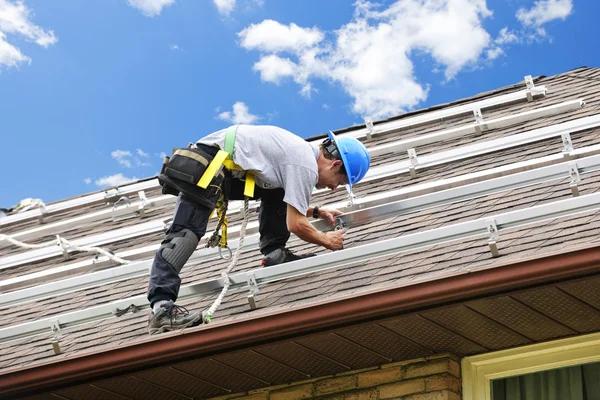
Roofing is a labor-intensive job that requires specific tools and equipment to ensure safety, efficiency, and high-quality outcomes. For beginners stepping into this industry, understanding the various roofing tools and their uses is crucial. This guide aims to introduce some of the most common roofing tools and equipment used by professionals.
Firstly, one of the most basic yet essential roofing tools is a roofing hammer or hatchet. This tool not only assists in removing old shingles but also helps in cutting new ones. It typically features a square head for driving nails into the roof and an axe-like edge for trimming shingles.
Next on the list are roofing installation nailers or nail guns. These power tools are designed specifically for applying roof shingles. They can significantly increase work speed as they drive nails into surfaces quickly and accurately. Roofing nailers come in two types: coil and stick, with coil being more popular due to its larger capacity.
Ladder hooks are another vital piece of equipment that ensures safety while working on roofs. They secure ladders firmly onto roofs, preventing them from sliding or falling off during use.
Tin snips or metal shears are used for cutting through metal flashing or gutters when installing roofs. There are three types: straight-cutting (yellow handle), left-cutting (red handle), and right-cutting (green handle). Each type cuts curves and circles in different directions which makes them useful for different tasks.
A pry bar or crowbar is used primarily for removing old roofing materials such as nails, staples, tiles, etc., before installing new ones. Its curved end provides leverage making it easier to pull out stubborn nails without damaging surrounding materials.
Roof brackets provide safe platforms when working on steep-pitched roofs by creating flat surfaces where workers can stand comfortably while performing their duties.
Shingle cutters help cut asphalt shingles neatly without causing any damage to them which aids in achieving professional-looking results every time.
Roofing shoes or boots are designed to provide traction on steep roofs, preventing slips and falls. They typically feature soft rubber soles that grip onto surfaces without causing any damage.
Lastly, safety equipment such as harnesses, helmets, gloves, and goggles should never be overlooked. They protect workers from potential hazards like falling objects, sharp materials, harmful dust particles etc., ensuring their well-being at all times.
In conclusion, roofing requires a wide range of tools and equipment for successful completion of tasks. From basic hand tools like hammers and pry bars to power tools like nail guns; from safety gear like harnesses and roofing shoes to auxiliary items like ladder hooks and roof brackets; each tool plays a crucial role in the process. As a beginner venturing into this field, familiarizing yourself with these tools can pave the way for safer and more efficient work practices.
KTM EXTERIORS & ROOFING
16 Rollins St, Groveland, Massachusetts 01834
978-310-3139






